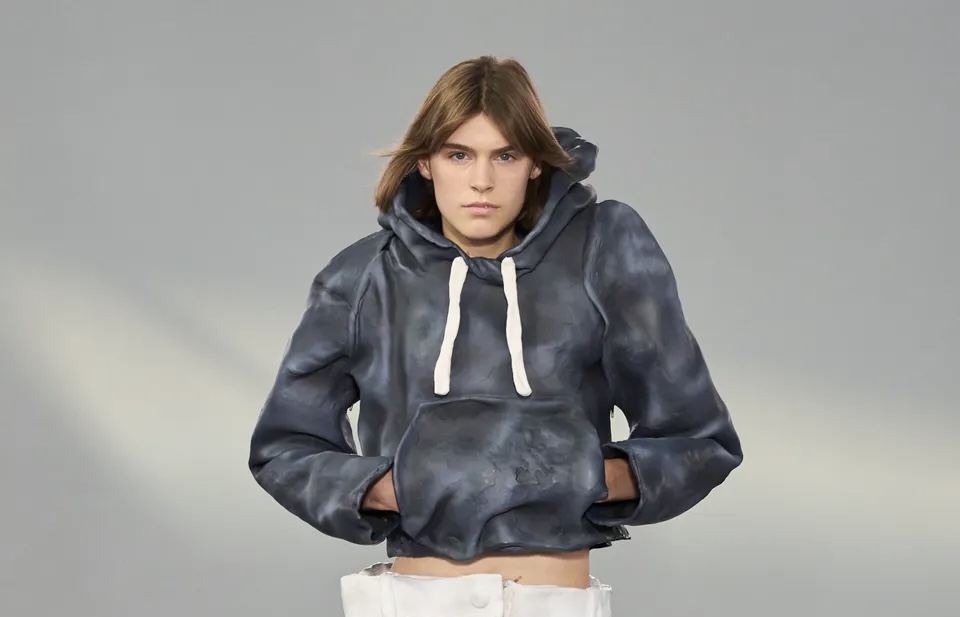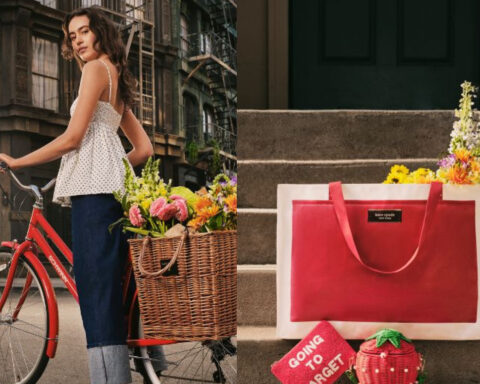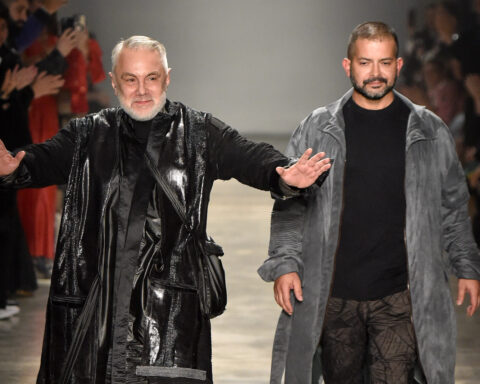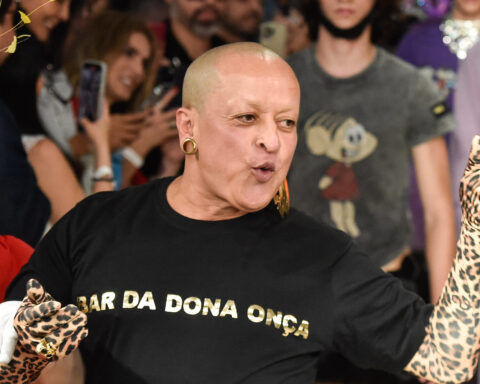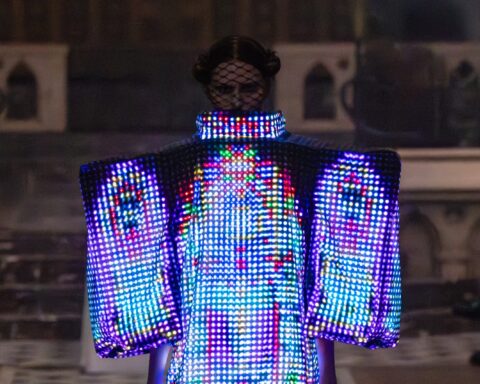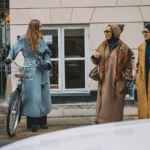JW Anderson
Jonathan Anderson, at London fashion week, the prodigious Irish designer behind the iconic JW Anderson brand, staged a monumental takeover of Northwest London’s Roundhouse venue—a space once dominated by Christopher Kane. The atmosphere buzzed with excitement, and a VIP cameo from pop sensation Charlie XCX elevated the occasion to must-see status. But it was Anderson’s Spring/Summer 2024 collection that truly stole the show, thrusting us into a world where fashion and art collide in an enchanting symphony.
The magic began before the event even kicked off. Anderson’s artful invites were not just pieces of paper but tinted blocks of clay, offering attendees a tactile preview of what was to come. This was not your average fashion show; it was an invitation to participate in a collective daydream.
Strutting down the catwalk, models donned creations that looked as if they had emerged from an art studio rather than a designer’s workshop. Anderson’s use of cemented materials breathed new life into familiar garments, turning them into living, three-dimensional masterpieces. Imagine Barbie trading her Malibu mansion for a stint at a sculptor’s studio, and you’ll get the picture. Cropped tees and folded denim shorts were chiseled from hydrated clay, giving off an earthy yet sophisticated allure.
Ever the maestro of material manipulation, Anderson didn’t stop at clay. Hooded motorcycle jackets were reimagined with thick-cut drawstrings, providing a sense of armory-like protection. Feathers flirted with indoor winds, adorning padded outerwear that took flight both literally and figuratively.
In a nod to last year’s aquatic-themed fish dress, this year Anderson played with plastic bags, dyed in jubilant primary colors. These were artfully knotted at the shoulders, creating a whimsical, inflated look. Meanwhile, beads shimmered like dew on a morning leaf, intricately woven into pocketed dresses that looked as if they had been frozen in a fabulous moment.
Anderson sealed the deal with trousers as slouchy as a weekend morning, their silhouettes creating a sense of joyful abandon. Color-blocked dresses featured circular cutouts that gave a nod to mod aesthetics, and glittered lattice skirts and twisted dresses hinted at endless summer nights to come.
At London Fashion Week, the Spring/Summer 2024 collection proved once again that Jonathan Anderson is not just a fashion designer; he’s a visionary who knows how to blend the realms of the wearable and the sculptural. And as we left the transformed Roundhouse, we couldn’t help but feel that we had just stepped out of a wonderland where the boundaries of fashion had been lovingly, brilliantly expanded.
Eudon Choi
Eudon Choi brings a breath of fresh air to the fashion world, and his latest spring collection is no exception. Imagine the easygoing vibe of a day at the beach, but make it high fashion. Choi, a Seoul-trained tailor, knows how to combine laid-back charm with sharp tailoring like no one else. This season, Choi takes inspiration from French Impressionist painter Berthe Morisot. Known for her soft-focus works, Morisot’s gentle blues, earthy browns, and rosy pinks bring a grown-up prettiness to the collection. Picture it as a Claude Monet painting that you can wear: poetic but practical. But that’s not all. Ever heard of ’90s Giorgio Armani? His relaxed tailoring style also influenced Choi’s designs, adding a touch of unexpected drama. Think cutouts and drapery that won’t have you second-guessing your outfit choice at a soirée. At London Fashion Week, the runway show itself was a diverse celebration. Models ranged from fresh faces to Sandy, a fabulous 50-something making her runway debut in standout gunmetal gray attire. Even the legendary Korean model Choi Miae couldn’t resist stepping out of retirement to grace the catwalk.So if you’re looking for fashion that’s as fleeting as a spring breeze yet as timeless as a well-tailored suit, Eudon Choi’s new collection may be your perfect match.
Video Credit: Instagram/EUDON CHOI
KWK
Move over, traditional fashion! London Fashion Week just got a reality-altering upgrade courtesy of designer Kay Kwok’s brand, KWK. Making a show-stopping return, KWK marks a new chapter in the storied event’s calendar, leaving attendees questioning the boundaries of gender, beauty, and even the laws of physics.
Guided by Kay Kwok’s unparalleled vision, KWK isn’t just showcasing clothes; it’s pioneering a future. Say goodbye to conventional norms, this brand tosses out the rulebook to introduce an electrifying blend of experimental designs and audacious themes. This season, we’re not just in a tent in London; we’re transported to another realm, one infused with spirituality and charged with a palpable, frenetic energy.
Ditching gender-specific garb and age-old beauty standards, Kwok offers an invitation to express oneself unfettered. He’s not just breaking barriers; he’s vaporizing them. The SS24 collection takes sartorial ingenuity to otherworldly heights, fusing cutting-edge tech with intricate craftsmanship. This is fashion as emotional sculpture—each piece is a textured visual sonnet.
The voyage through KWK’s runway is nothing short of celestial. Starting in a realm of darker, moody tones, the audience is gradually bathed in a euphoric explosion of light and color. It’s as if Buddhist wisdom went on a date with a supernova. The fusion of natural and ethereal elements imbues the collection with an almost mystical allure, making each moment an exhilarating revelation.
Interwoven with Buddhist motifs and the raw beauty of Mother Nature, this collection radiates an almost religious spiritualism. It’s as if we’re not just wearing clothes but donning our most transcendent selves. The iridescent fabrics, intricate patterns, and visionary motifs combine to deliver an experience akin to spiritual ecstasy.
The emotional climax comes with a tribute to Coco Lee, a late artist and friend of Kay Kwok. This isn’t just a collection but a moving elegy to a lost visionary, a fitting homage to someone who, like Kwok, sought to push boundaries and inspire new ways of thinking. Their 2019 collaboration becomes an eternal snapshot, forever imprinted on the world of art and fashion.
In a time when fashion is so often labeled as superficial, KWK by Kay Kwok dives deep. It not only pushes us to question traditional boundaries but also compels us to look inward and upward. This season, London Fashion Week wasn’t just a showcase of fabrics and models; it was a platform for existential queries and cosmic curiosity. And for that, the fashion world will never be the same.
Video Credit: Instagram/kwkbykaykwok
Feben
Feben’s latest collection, Temple, is a bold, fashionable middle finger to outdated beauty norms. Inspired by the genius of artist Carrie Mae Weems and biblical sayings, the collection screams, “This is my body, and it’s fabulous!” Think of it as Feben’s own rebellious take on self-love that sashays right down the runway.
The collection’s color palette is a tour de force: sultry deep yellows and chocolate browns spiced up with eye-popping reds, purples, and blacks. Each piece oozes a body-positive vibe, whether it’s her jersey column dresses stamped with a screen-print of her own physique or the flirty silk minis covered in bold spiral brushstrokes.
And let’s talk beads! Handcrafted by artisans from Accra, these beaded marvels are a masterstroke. Swishing down the runway, the garments flaunt everything from dramatic, tassel-loaded gowns to sexy V-skirt minis, all dripping in meticulous beadwork. Feben hints they’re meant to mirror the female form—uncomfortable for some, maybe, but ultimately a celebration of the “sacred temple” that is a woman’s body.
The grand slam moment? American model legend Debra Shaw pausing dramatically mid-strut, while a soundtrack of the late Sinéad O’Connor’s “I Want Your (Hands on Me)” fills the air. Feben says the song captures the essence of her collection: a dance between extroversion and vulnerability. Call it what you want—daring, insane, or purely honest—it’s Feben’s love letter to women and their bodies, and it’s unmissable.
Molly Goddard
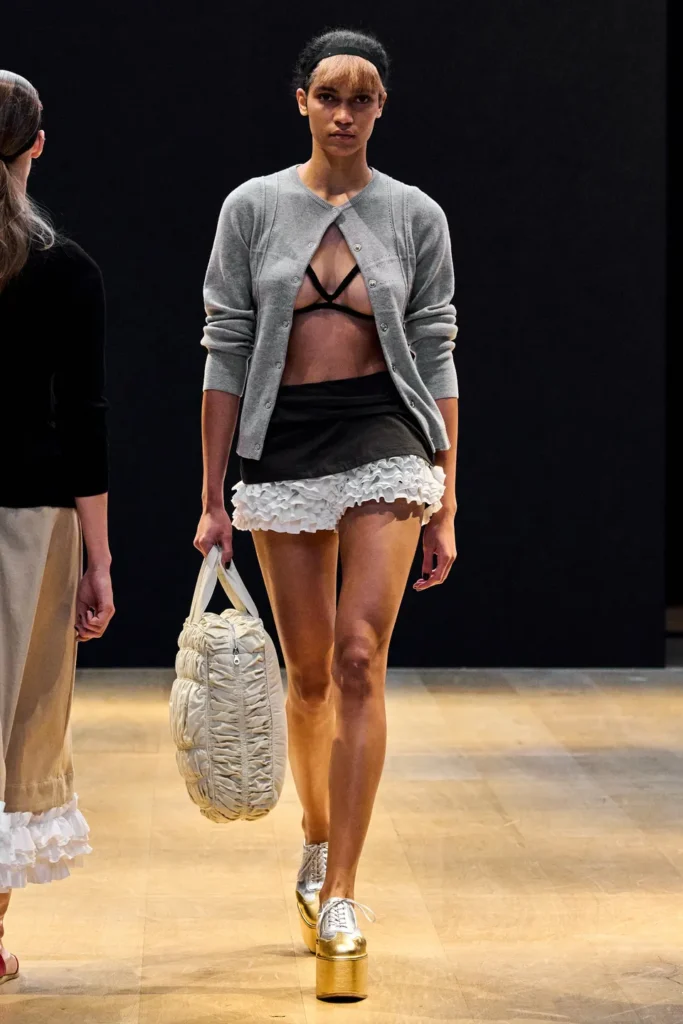
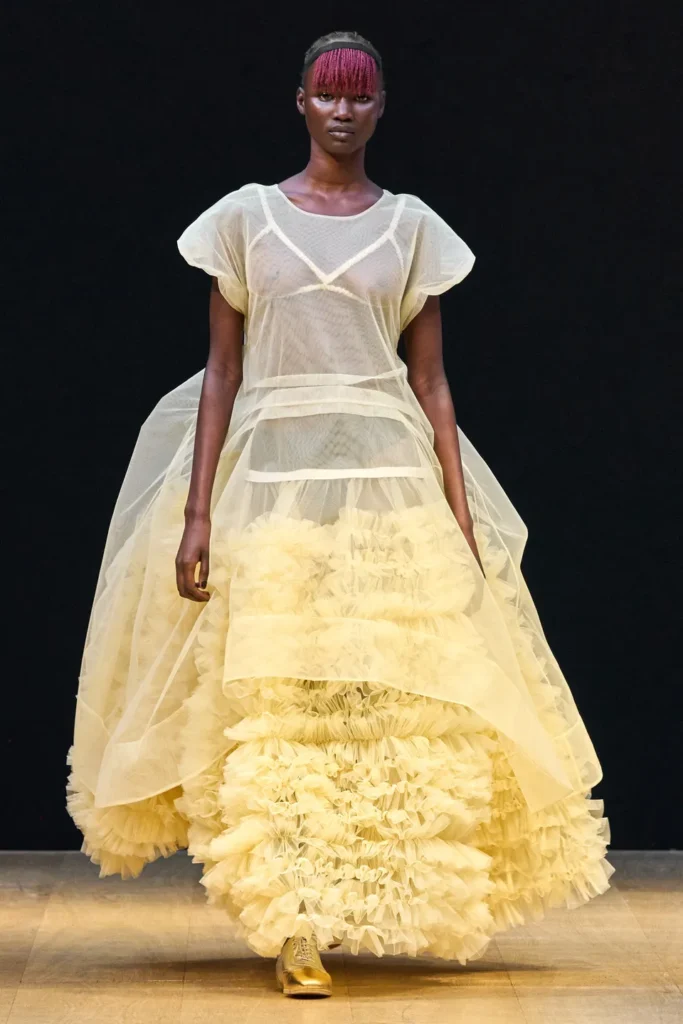
Designer Molly Goddard, renowned for her exaggerated silhouettes and layers of tulle, took a dramatically different turn in her latest collection. This season, Goddard opted for understated elegance, proving that her designs don’t require pomp and circumstance to make a lasting impression.
In preparation for the collection, Goddard immersed herself in the extensive costume archives of the National Theatre. Her research spanned eras from the Regency period to modern times, as she pulled inspiration from each. The end result was a carefully curated mixture of elements—from ’50s bras and crinolines to Georgian underskirts—creating a look that was both contemporary and steeped in history.
Among the standout pieces were cardigan-jacket hybrids with satin trims in pastel hues, fitted dresses evoking monastic simplicity but with playful ruffles peeking out, and fishtail skirts that resembled duvets in their softness and comfort. A departure from her previous work often labeled as “twee,” this collection hinted at maturity and depth, offering a sultry undertone without being overtly sexual.
Held at Christie’s auction house, a location Goddard has frequented for behind-the-scenes explorations during exhibitions, the show itself was an artwork in motion. House dresses adorned with faded floral prints seemed to echo the fine art often found hanging on Christie’s walls. The models’ uniformity was evident in their fringe hairstyles, but individuality peeked through, with some donning lace-up ballet flats while others sported metallic boxing boots.
Goddard expressed her vision of uniformity infused with individualism. “I really wanted everyone to feel quite uniform, but individual,” she said, encapsulating the duality of her latest collection.
Molly Goddard has succeeded in showcasing a style that balances substance with simplicity. Her refined focus on history, her reimagining of wardrobe staples, and her tasteful venue choice all contributed to a collection that speaks volumes without needing to shout. This season, Goddard proves that the heart of fashion isn’t always in its grand gestures, but often in its nuanced details.
16 Arlington
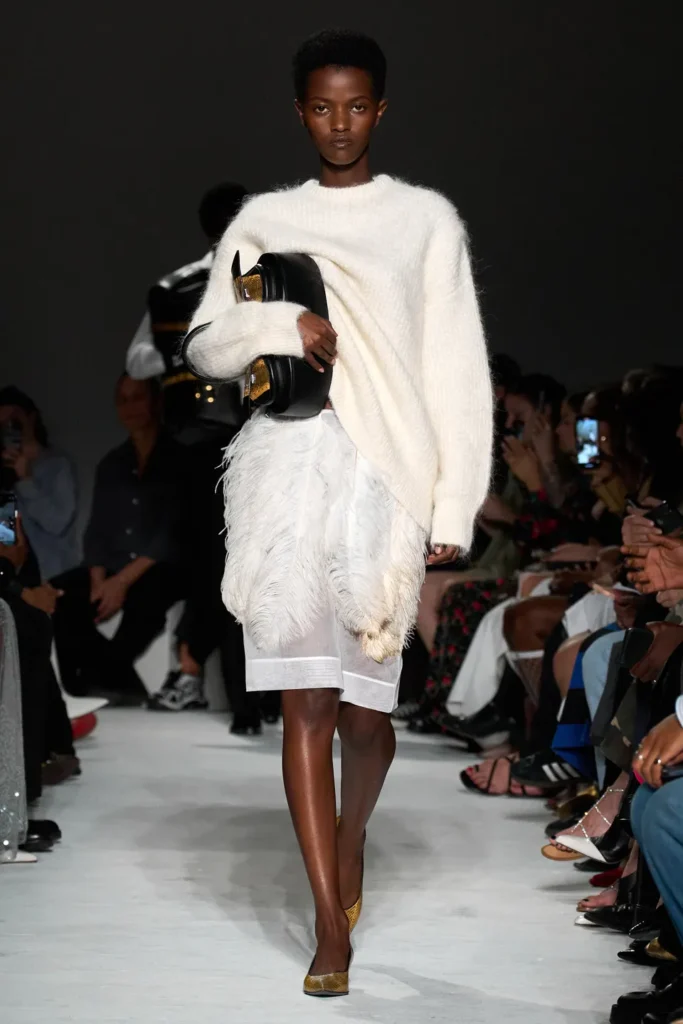
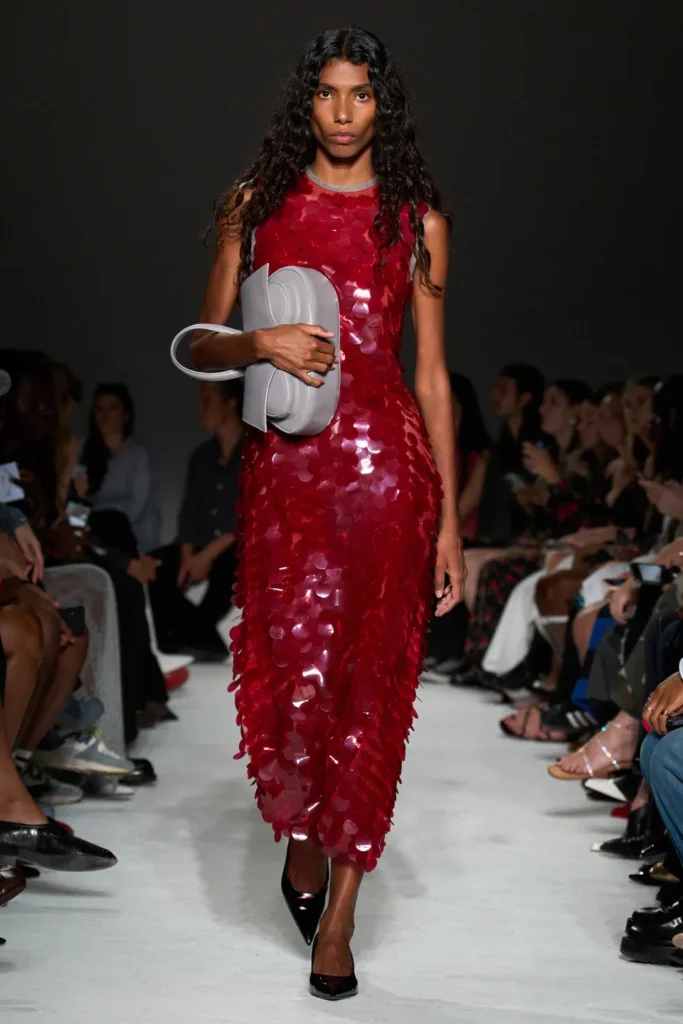
When Marco Capaldo, co-founder of 16Arlington, says he’s “trying to build a new luxury house in London,” you better believe he’s not just shooting for the stars—he’s grabbing them. After taking home the BFC/Vogue Designer Fashion Fund accolade this May, Capaldo’s creative genius has been solidified, not just as a designer but as a visionary.
Let’s talk about his latest season that’s giving everyone fashion whiplash—in a good way. Imagine stepping into a David Lynch film. Confused? Intrigued? Both? Capaldo cleverly spun Lynch’s mystique around his fingertips to create an enigmatic collection. From glistening skirts to dresses with an allure of translucent latex, he offers a sensual palette that dances in hues from snowy white to evocative shades of red, blue, and gray. If you think you’re looking at oversized sequins, listen closely. That’s the sound of metal rustling as the models strut by.
At London Fashion Week, the collection also pays homage to something as ordinary as driving through a city under the cover of night. Think the romantic gleam of red taillights and rain-soaked windshields. The shades of ultra-bright red and cyan in the collection pop as if freshly printed from an inkjet, conjuring images of tinted halogen lights against the night sky. High heels playfully mimic the tentacles of an automatic car wash, offering a blend of whimsy and sensuality that’s irresistibly captivating.
Capaldo’s shift to more relaxed stylings is a breath of fresh air in the fashion world. The brilliance lies in his ability to take Wall Street crispness and marry it with the laid-back charm of sequined skirts and sweatshirt fabric trousers. Forget the power tie; Capaldo is setting the stage for power casual.
As the models clutched oversized versions of the Kikka bag to their chests, it was a poignant nod to Capaldo’s late co-founder, Kikka Cavenati. Only time will tell how far Capaldo’s 16Arlington will soar. But if the recent collections are any indication, the sky’s the limit. From a soft reboot to soaring ambitions, Capaldo is steadfastly redefining what luxury fashion can be, one shimmering, cinematic stitch at a time. And for that, we are all eyes—and ears.
Labrum
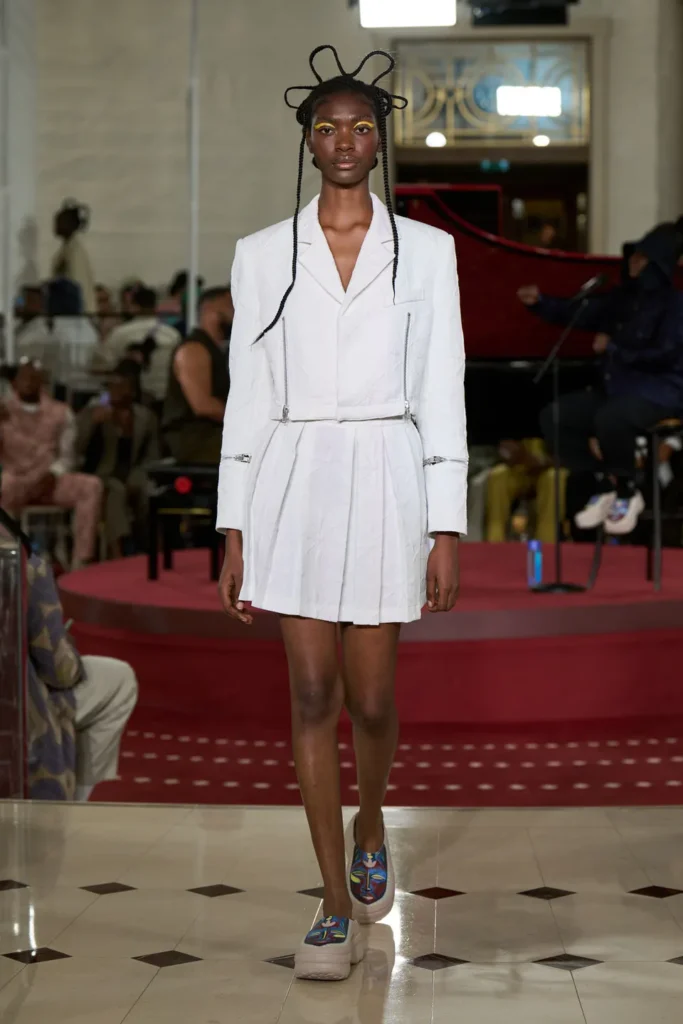
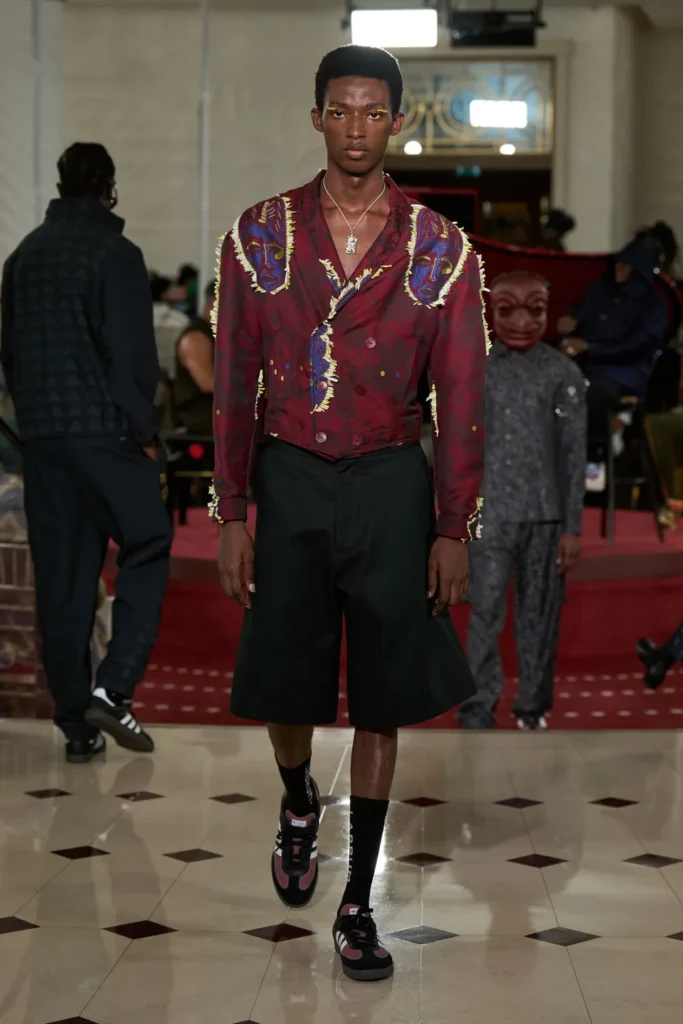
In a groundbreaking moment that sends traditional fashion critics into a philosophical quandary and soccer fans into a euphoric frenzy, Ian Wright—yes, the Arsenal legend—graced the runway. But let’s not forget who made this fashion-football crossover dream a reality: Foday Dumbuya, the brilliant mind behind the Labrum brand. This season, London Fashion Week was injected with a shot of adrenaline, courtesy of Labrum’s exquisite collection that blends elements of sport, heritage, and high fashion.
At London Fashion Week, Wright opening the Labrum show was a stroke of genius, a cultural crossover that had fashionistas and football enthusiasts practically levitating in their seats. Wright looked as dapper as ever in a navy, double-breasted suit layered over what appeared to be Arsenal’s current third kit. Clearly, this wasn’t just a footballer awkwardly stepping into the fashion world; it was a seamless blend of two universes colliding and coexisting harmoniously.
Dumbuya, having won the prestigious Queen Elizabeth II Award for British Design and collaborated with iconic brands like Guinness, has proved he is no one-hit wonder. Yet, he remains remarkably grounded. His aspirations? To create an authentic platform for diverse talents and stories—ideals he has held since launching Labrum in 2014.
Dumbuya’s runway was set against the luxurious backdrop of a grand piano, situated under the Art Deco dome of the Four Seasons Hotel’s rotunda bar. Tawiah, a gifted singer-songwriter, provided the soundtrack, accompanied by the emotive pianist Karim Kamar. The audience couldn’t help but be swayed by the sheer artistic energy pulsating through the room.
Dumbuya’s collection was a sartorial smorgasbord: sleek suiting, casual sportswear, and textured fabrics that pay homage to West African masquerades. And let’s not forget those Adidas Samba sneakers stamped with Nomoli artwork, a nod to the good-luck charms of Sierra Leone.
Dumbuya isn’t just a designer; he’s a storyteller. His choice of venue—a Grade II–listed building that once served as the London ports authority—wasn’t mere aesthetic. It was a historical commentary on migration, work, and the confluence of diverse influences that shape modern fashion.
As the models made their final walk, the audience rose in standing ovation, in what seemed to be a symphonic culmination of fashion, music, sports, and heritage. And although the Ian Wright chant was conspicuously missing, perhaps the room was simply too stunned, collectively holding its breath, contemplating the new era of fashion that Foday Dumbuya had just unfurled.
And that, my friends, is how you shake up London Fashion Week.
